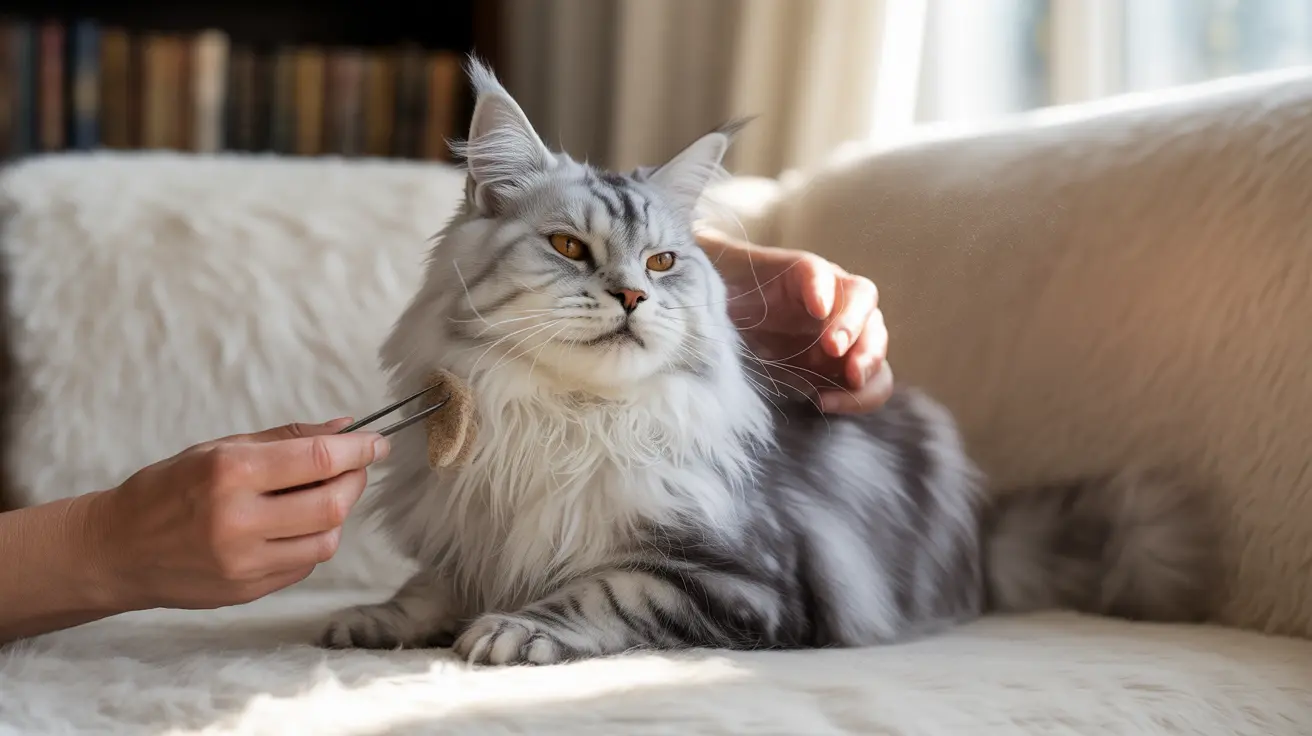For cat owners, dealing with dingleberries - those unpleasant clumps of feces caught in your cat's fur - can be both challenging and concerning. While this issue affects cats of all breeds, long-haired cats are particularly susceptible to developing these problematic fur-matted fecal clumps.
Understanding how to prevent, identify, and safely address dingleberries is crucial for maintaining your cat's hygiene and overall health. Let's explore everything you need to know about this common feline problem and learn effective solutions to keep your furry friend clean and comfortable.
What Are Cat Dingleberries?
Cat dingleberries occur when fecal matter becomes tangled in the fur around a cat's anal area, creating small clumps or mats. These can range from minor nuisances to serious health concerns if left unaddressed. The medical term for severe cases is pseudocoprostasis, which can actually interfere with normal defecation.
Common Causes and Risk Factors
Physical Characteristics
Long-haired cats like Persians, Maine Coons, and Himalayans are naturally more prone to developing dingleberries due to their thick, dense fur. However, any cat can experience this issue under certain circumstances.
Health-Related Factors
- Digestive issues leading to soft stools
- Obesity limiting self-grooming ability
- Arthritis or mobility problems
- Stress-related digestive changes
- Parasites or infections
Prevention Strategies
Regular Grooming
Establishing a consistent grooming routine is essential, especially for long-haired cats. Daily brushing helps prevent mat formation and allows you to spot potential problems early.
Maintaining Proper Diet
Feed your cat high-quality food that promotes healthy digestion and well-formed stools. Ensure adequate water intake to prevent constipation and maintain proper stool consistency.
Safe Removal Techniques
When dealing with dingleberries, safety should be your primary concern. Here are the steps for safe removal:
- Wear disposable gloves
- Use warm water and cat-safe wipes
- Gently remove loose debris first
- For stubborn mats, seek professional help
- Never use scissors near sensitive areas
When to Seek Veterinary Care
While many cases of dingleberries can be managed at home, certain situations require professional attention:
- Persistent diarrhea or soft stools
- Signs of skin irritation or infection
- Inability to pass stools normally
- Excessive matting that cannot be safely removed at home
- Changes in eating or bathroom habits
Frequently Asked Questions
What causes dingleberries to form on my cat's fur, and why are long-haired cats more prone to them?
Dingleberries form when fecal matter becomes trapped in the fur around a cat's anus. Long-haired cats are more susceptible due to their dense, lengthy fur that more easily traps debris and fecal matter. Factors like loose stools, poor grooming habits, or medical conditions can increase the likelihood of formation.
How can I safely remove dingleberries from my cat without hurting them?
Use gentle, patient handling while wearing gloves. Start with a warm, damp cloth to soften the material, then carefully remove loose debris. Never pull forcefully or use scissors without professional guidance. For stubborn cases, seek help from a groomer or veterinarian.
What are the signs that my cat has dingleberries or related health issues?
Watch for visible clumps near the anus, scooting behavior, excessive licking of the rear area, foul odor, or signs of discomfort. Related health issues may include changes in stool consistency, decreased appetite, or irritated skin.
How often should I groom my cat to prevent dingleberries, and can trimming the fur help?
Long-haired cats should be groomed daily, while short-haired cats need weekly attention. Regular sanitary trims around the rear area can significantly reduce dingleberry formation, especially in long-haired breeds.
When should I take my cat to the vet for dingleberries or persistent hygiene problems?
Seek veterinary care if you notice persistent diarrhea, skin irritation, inability to defecate normally, or if the dingleberries are too matted to safely remove at home. Also consult a vet if the problem frequently recurs despite preventive measures.






